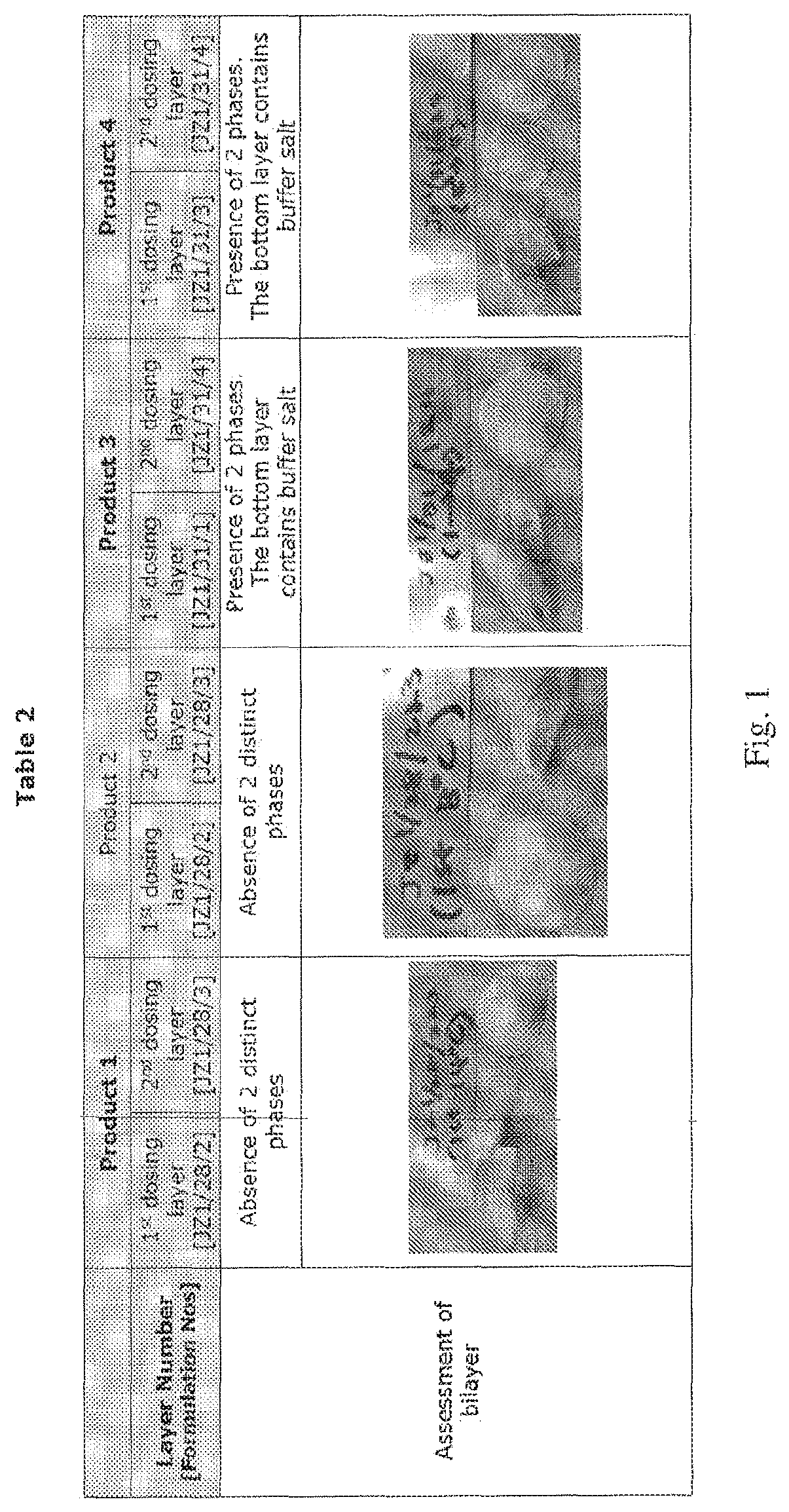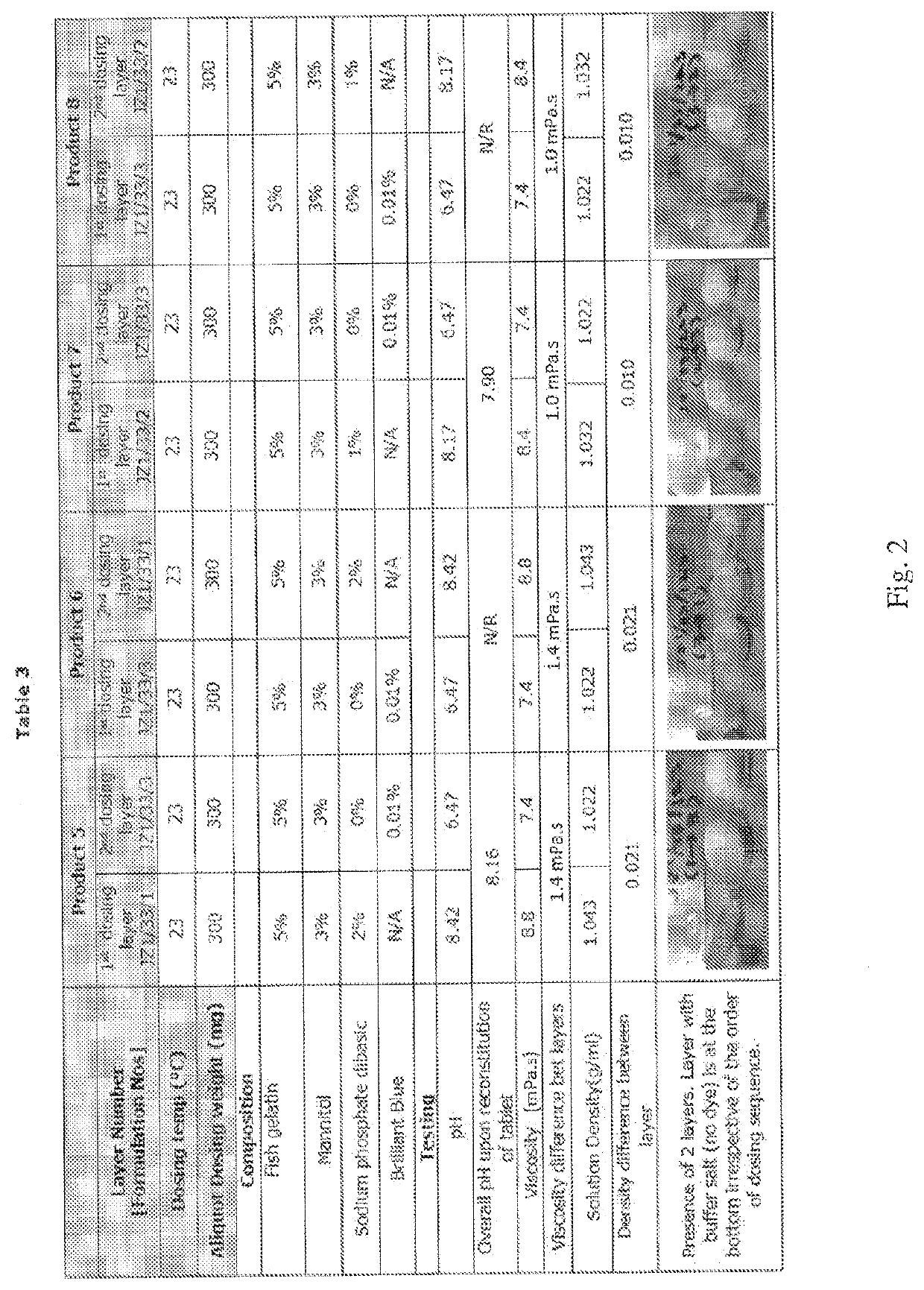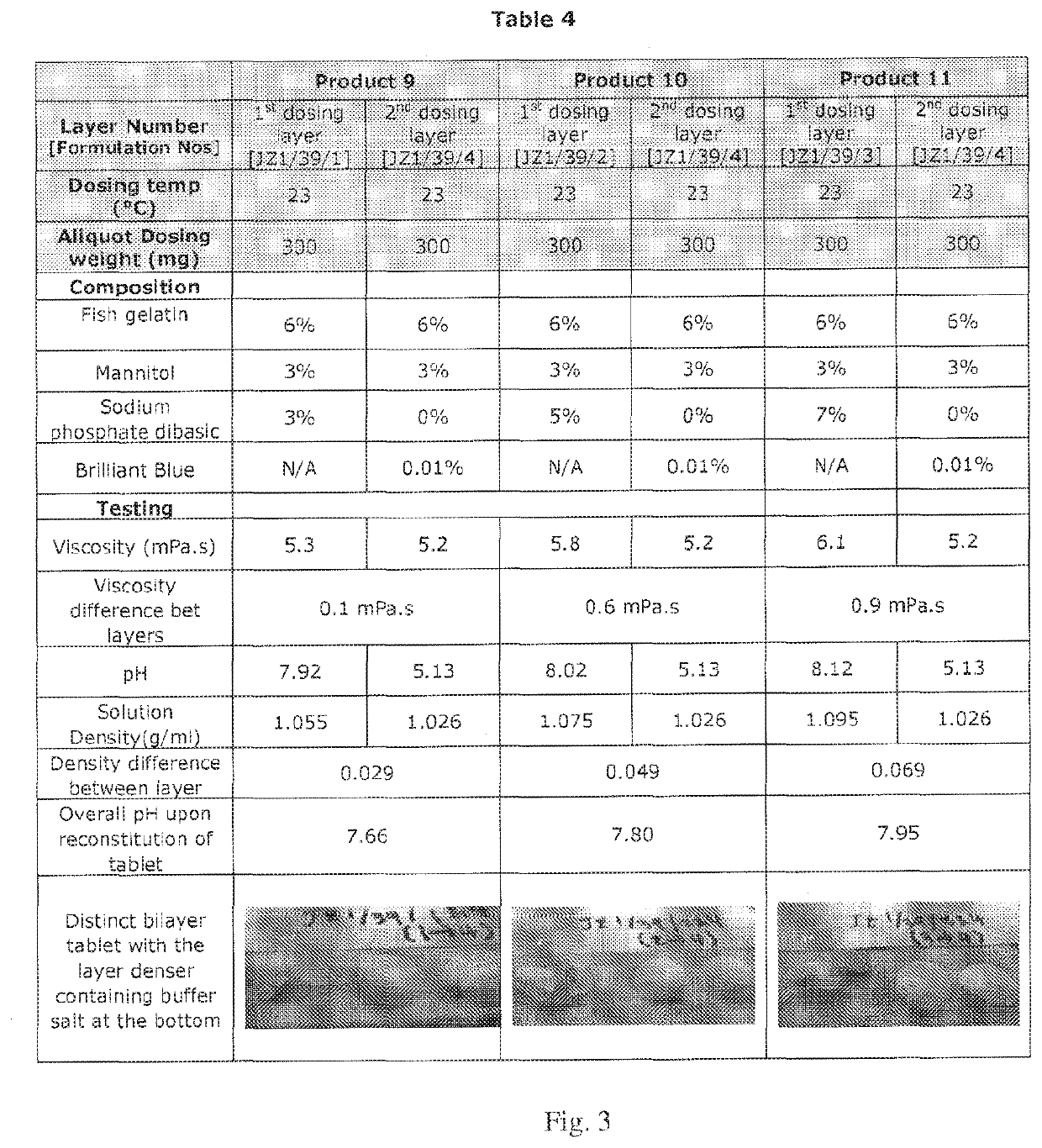Compositions of different densities for fast disintegrating multi-layer tablet
a multi-layer tablet and density technology, applied in the direction of metabolism disorder, extracellular fluid disorder, immunological disorder, etc., can solve the problems of affecting the effect of drug administration
- Summary
- Abstract
- Description
- Claims
- Application Information
AI Technical Summary
Benefits of technology
Problems solved by technology
Method used
Image
Examples
example 1
[0108]Using placebo formulations, a comparison was made between use of a viscosity adjustment and a density adjustment to form a two layer tablet. Products 1 and 2 as shown in Table 1 were made using a viscosity adjustment to make the two layer dosage form. Products 3 and 4 in Table 1 were made using a density adjustment to create the two layer dosage form. The Experimental Procedure described above was used with the modifications indicated below.
[0109]To adjust the viscosity of Products 1 and 2, the dosing temperature of the formulations was adjusted. For the first dosing layer, dosing temperatures of 14° C. and 8° C. were used for Products 1 and 2, respectively. For the second dosing layer, a dosing temperature of 23° C. was used for both Products 1 and 2. Lowering the dosing temperature increases the viscosity of the formulation during dosing as shown in Table 1. The viscosity and the pH of each layer were measured. Following freeze drying, Products 1 and 2 were inspected for app...
example 2
[0114]Example 2 evaluated the effect of the sequence of dosing formulations having different densities on the formation of a bilayer or two layer tablet. Two layer dosage forms were manufactured using the Experimental Procedure described above. The formulations contained 5% fish gelatin and 3% mannitol. The product was sequentially dosed with either: (a) first layer dosing with a formulation containing buffer salt followed by second layer dosing of the same formulation without buffer salt (Products 5 and 7), or (b) first layer dosing with a formulation without buffer salt and second layer dosing with a formulation containing buffer salt (Products 6 and 8). Brilliant blue dye solution was added to the formulation without the buffer salt.
[0115]The pH and viscosity of the formulations for each layer are summarized in Table 3 of FIG. 2. Following freeze drying, the dosage forms were inspected for appearance.
[0116]Example 2 confirmed the results of Example 1, and further demonstrated tha...
example 3
[0117]The two layer tablets of Example 3 were manufactured using the Experimental Procedure described above. However, in Example 3, the formulations contained 6% w / w fish gelatin and 3% w / w mannitol.
[0118]The product was sequentially dosed. The formulation for the first layer dosing contained buffer salt at three different concentrations (3%, 5%, and 7%, Products 9, 10, and 11, respectively). Brilliant blue dye solution was added to the formulation without buffer salt to aid in visualization of the layer and this was dosed as the second layer. The viscosity of the formulation for each layer was measured. For each layer, 300 mg of the formulation was dosed. The dosed product was rapidly frozen at low temperature (<−70° C. using liquid nitrogen for 3 minutes). The frozen products were freeze dried at 0° C. for 12 hours. Following freeze drying, the tablets were inspected for appearance. The results are shown in Table 4 of FIG. 3.
[0119]The sequence of dosing was also reversed using the...
PUM
| Property | Measurement | Unit |
|---|---|---|
| Temperature | aaaaa | aaaaa |
| Temperature | aaaaa | aaaaa |
| Fraction | aaaaa | aaaaa |
Abstract
Description
Claims
Application Information
 Login to View More
Login to View More - R&D
- Intellectual Property
- Life Sciences
- Materials
- Tech Scout
- Unparalleled Data Quality
- Higher Quality Content
- 60% Fewer Hallucinations
Browse by: Latest US Patents, China's latest patents, Technical Efficacy Thesaurus, Application Domain, Technology Topic, Popular Technical Reports.
© 2025 PatSnap. All rights reserved.Legal|Privacy policy|Modern Slavery Act Transparency Statement|Sitemap|About US| Contact US: help@patsnap.com



